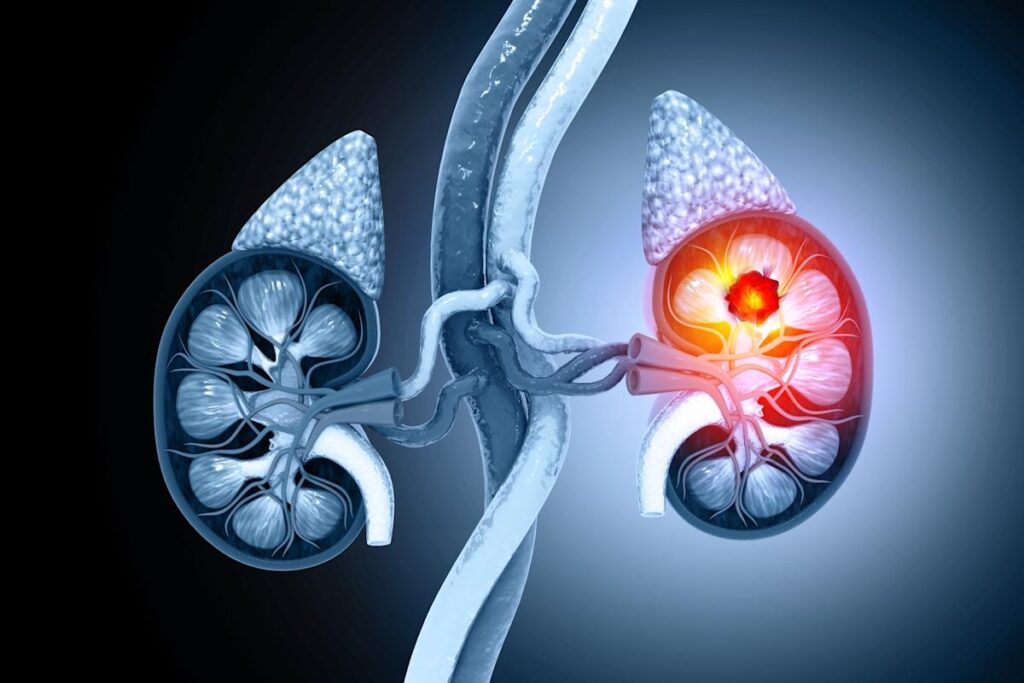Last Updated on October 31, 2025 by Bilal Hasdemir

Not all bladder tumors are cancerous. Many are malignant, but a big part are benign or pre-cancerous. Dr. says benign masses in the bladder are rare, making up less than 1% of bladder masses.
We will look into the different types of bladder tumors. We’ll also talk about how to diagnose and treat them. Knowing the causes of bladder cancer and if it can be cured is key for early treatment.
A bladder tumor is an abnormal growth in the bladder’s lining or wall. These growths can be non-cancerous or cancerous. Knowing their type is key to choosing the right treatment.
A bladder tumor, also known as a bladder mass or polyp, is an abnormal growth in the bladder. “A non-cancerous (benign) tumour of the bladder is a growth that starts in the lining or other tissues of the bladder,” says medical definitions. These tumors can differ in their characteristics and harm.
Bladder tumors can cause symptoms like blood in the urine and frequent urination. These signs may mean you need a doctor’s check-up to find out what the tumor is.

Bladder tumors are mainly benign or malignant. Benign tumors are non-cancerous and don’t spread. Malignant tumors are cancerous and can spread.
In situ bladder tumors, a type of malignant tumor, make up about 50% of cases. They have a nearly 98% five-year survival rate, as SEER data shows. Early detection and treatment are very important.
Non-cancerous tumors don’t spread to other parts of the body. This is different from malignant tumors. Knowing the difference helps doctors plan better treatments.
Exploring bladder tumors, we find important stats and risk factors. These tumors, benign or malignant, affect public health, mainly in certain groups.

In the U.S., bladder cancer is a big health concern. It’s the fourth most common cancer in men. Men are four times more likely to get it than women.
The five-year survival rate for bladder cancer is about 77-79%. This shows how vital early detection and treatment are. Both benign and malignant tumors need a detailed approach to diagnosis and care.
Survival rates for bladder tumors depend on their type and stage. Non-muscle-invasive bladder cancer has a better prognosis than muscle-invasive. Knowing these differences is key for patients and doctors.
It’s important to know if a bladder tumor is benign or malignant. This affects treatment plans and outcomes. We’ll look into these differences next.
Several factors increase the risk of bladder tumors. Age is a big one, with risk growing with age. Smoking is another major risk factor, exposing the bladder to harmful substances.
Occupational exposure to certain chemicals also raises the risk. Understanding these risks is vital. Quitting smoking, for example, can greatly lower bladder cancer risk. We must also consider genetic predisposition and other risk factors.
By studying bladder tumor stats and risks, we can tackle this complex issue. It needs a broad approach, from public health to individual care.
It’s important for patients to know the signs of bladder tumors. This knowledge can lead to timely care and treatment. At Liv Hospital, we focus on preventive and curative healthcare with high standards. We stress the need to recognize bladder tumor symptoms.
The first signs of bladder tumors can be hard to spot. They might include:
Dr. says, “Some symptoms can mean other problems, like infections or stones.” So, seeing a doctor for a correct diagnosis is key.
As tumors grow, symptoms get worse. They might include:
If you notice these symptoms, get medical help right away. Early treatment can greatly improve bladder tumor outcomes.
“Early detection and treatment are key to managing bladder tumors. We aim to provide full care to our patients,” says Liv Hospital.
Knowing the symptoms and getting medical help quickly is vital for bladder health. We urge patients to be proactive about their health. If you notice unusual symptoms, talk to a healthcare professional.
Doctors use many tools to check if a bladder growth is cancer. They do tests to find out what the growth is, how big it is, and how to treat it.
Urologists start by doing a physical check and blood and urine tests. They look for blood in the urine. Then, they might do:
For non-cancerous bladder polyps, treatment depends on their size, number, and symptoms. Small polyps might not need treatment and can be watched. But, if they cause problems or could turn cancerous, they might be removed.
Treatment strategies for non-cancerous bladder polyps aim to ease symptoms and prevent problems. We might suggest:
For bladder cancer, treatment depends on the cancer’s stage, grade, and the patient’s health. The SEER program says in situ bladder tumors are common and have a high survival rate. Treatments include:
Knowing the causes of bladder cancer and treatment options helps patients make informed choices. We aim to support and guide patients through treatment.
It’s key to know about bladder tumors to understand if all are cancerous. Not all are, but many are, making early detection vital.
Studies show many bladder tumors are cancerous. This shows we must know how to lower our risk. By knowing the risks and symptoms early, we can prevent it.
At Liv Hospital, we focus on top-notch care for bladder tumor patients. Our team creates custom treatment plans for the best results. Early action and prevention can greatly improve treatment success.
Being informed and proactive can lower bladder cancer risk. We aim to save many lives with the right approach. Our goal is to lead in bladder cancer care, supporting those affected fully.
A bladder tumor is an abnormal growth in the bladder. It can be either benign (non-cancerous) or malignant (cancerous).
No, not all bladder tumors are cancerous. Some are benign growths, like bladder polyps. Others can be malignant, like bladder cancer.
Common symptoms include hematuria (blood in the urine), urinary frequency, and painful urination. If you have these symptoms, seek medical attention.
The percentage of bladder tumors that are cancerous varies. But a significant portion are malignant. It’s important to get diagnostic testing to know the tumor’s nature.
Diagnostic procedures include cystoscopy, imaging scans, and biopsy. These tests help find the tumor’s presence, size, and type.
Risk factors include age, sex, smoking, and exposure to certain chemicals. Men are more likely to get bladder cancer than women. The risk increases with age.
Yes, bladder cancer is treatable. The treatment depends on the cancer’s stage and type. Options include surgery, chemotherapy, and immunotherapy.
The survival rate for bladder cancer varies by stage and type. Early detection and treatment improve survival rates.
The bladder is a hollow organ in the pelvis, behind the pubic bone. It stores urine until it’s eliminated.
A normal bladder is about the size of a small melon. It can hold around 400-600 milliliters of urine.
Gross hematuria is visible blood in the urine. It can be a symptom of bladder tumors or other urinary tract issues.
While not all gross hematuria cases are cancerous, a significant percentage are. It’s important to seek medical attention if you experience it.
Subscribe to our e-newsletter to stay informed about the latest innovations in the world of health and exclusive offers!
WhatsApp us